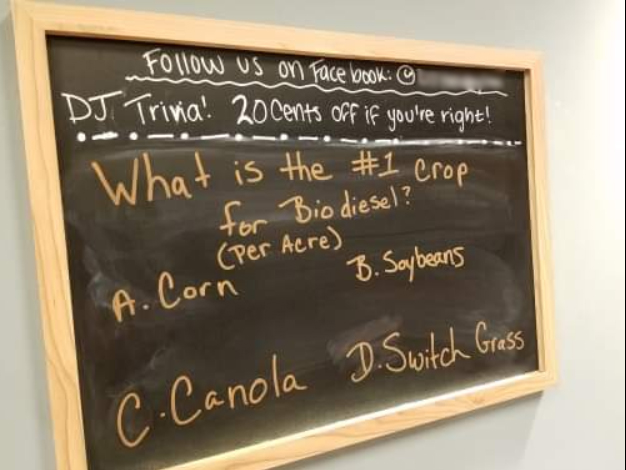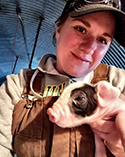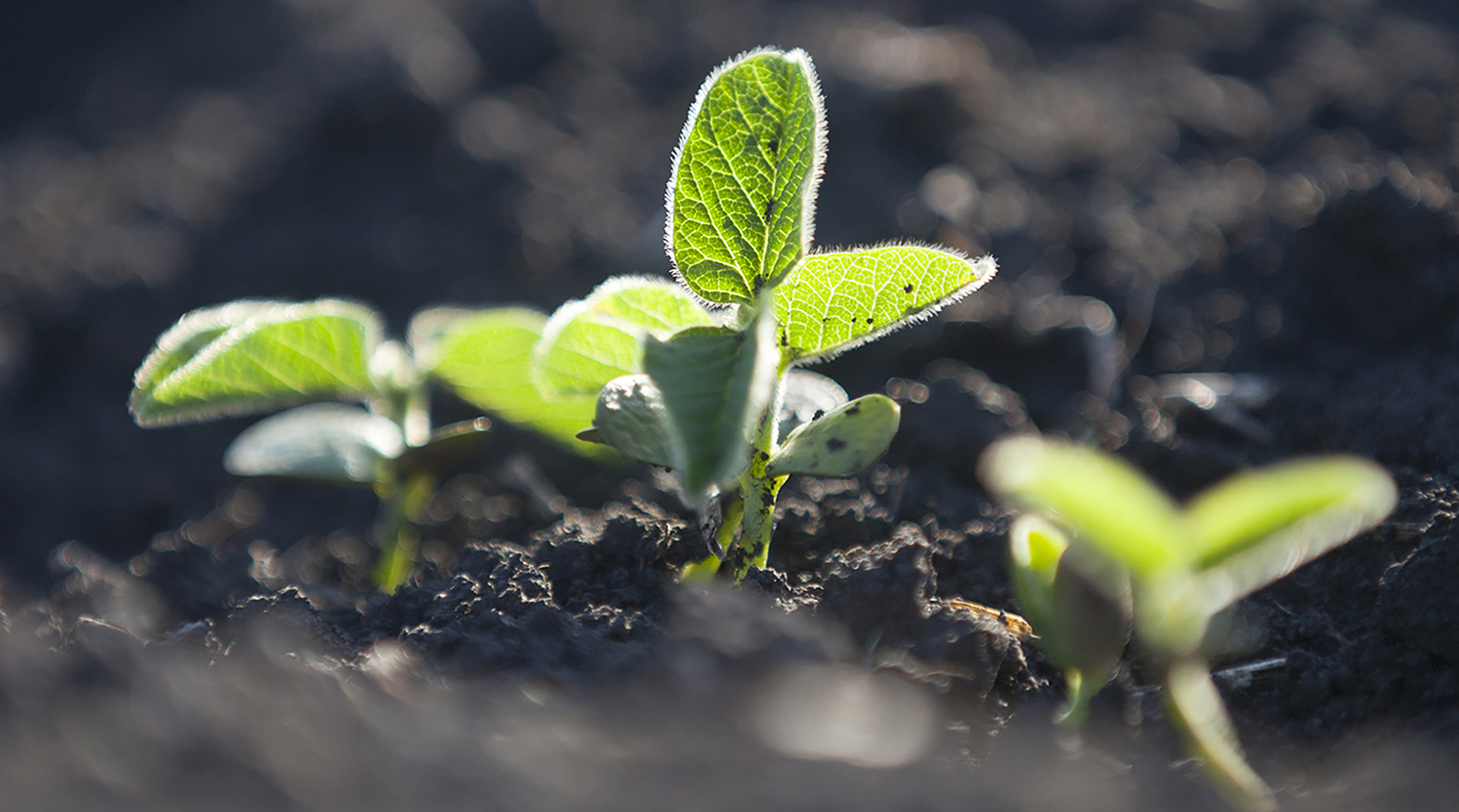by Heather Lang
Last fall while attending the NDFB Annual Meeting, I walked into the hotel's coffee shop. On the wall was a black chalk board with a daily multiple-choice question. If you answered the question correctly you got a small amount off your coffee.
This particular morning the question on the board was, “What is the #1 Crop for Biodiesel (per acre)? Corn, soybeans, canola, or switch grass.”
“I believe the answer to your question is B. Soybeans,” I said.
The barista replied, “Nope.” I looked at her with confusion and replied, “Really? What is the correct answer?”
“D. Switch grass,” the barista said and told me she found the answer on the internet.

“What site did you get your information from?” I asked, not because I was trying to be confrontational, but because I wanted to see it with my own eyes and fact check it. She hesitated but finally told me she got it from the University of Alabama website.
I was among 200 North Dakota farmers at that hotel for the NDFB Annual Meeting. My passion is to speak about the importance of agriculture in everyone’s lives.
My duty, sitting on the state and national Promotion & Education committees for Farm Bureau, is to share the facts about agriculture. After grabbing my Chia Tea latte, I started to research her answer. I checked out the website she got her information from and came up empty handed. I did a google search “#1 crop for biodiesel” and still never came up with switch grass as the answer.
If I didn’t know the answer, maybe others didn’t either. So, I dug deeper. I reached out to the N.D. Soybean Growers and asked if they could help me find the correct answer and give me data or credible resources to back up that answer. My inquiry led to a conference call with North Dakota Soybean Association staff and National Biodiesel Board Sustainability Director Don Scott, who says he sees confusion and misunderstanding about biodiesel all the time.
“There’s so much to know and the general public doesn’t have that background, so there are a lot of myths and rumors,” Scott said. “We have a good story to tell about biodiesel, but it’s often a complicated story.”
Biodiesel can be defined as: a fuel that is similar to diesel fuel and is derived from usually vegetable sources (such as soybean oil); a fuel that is similar to diesel fuel and is usually derived from plants.
“The difference between ethanol and biodiesel is that ethanol is made from sugar or starch and replaces gasoline,” Scott explained. “Biodiesel is made from fat or oil and replaces diesel fuel.”
To put things in perspective I asked him, “Which of these crops -- corn, soybeans, switchgrass and canola -- could be used for biodiesel?”
“The oil from corn, soybeans, canola or any other vegetable oil or animal fat can be used for biodiesel. Switch grass does not store solar energy in seeds. So, it can’t easily be turned into a conventional form of biodiesel or ethanol.”
He said plants store solar energy in seeds as fats and carbohydrates. When we harvest seeds for their protein content, we get more fats and carbohydrates than we can possibly eat, so we use the stored solar energy for biofuels. Starches and sugar carbohydrates can be fermented into ethanol. Fats and oils can be converted into biodiesel.
“The insoluble carbohydrates or cellulosic fiber in stems and grasses also store solar energy. The concept of cellulosic ethanol was aimed at converting insoluble carbohydrates into fermentable material. Nature designed fats and soluble carbs to be readily converted back to energy. Nature designed insoluble carbohydrates to be strong and durable.
“That makes it more challenging to convert cellulosic material into biofuel,” Scott said. “It is technically possible, but not commercially viable without more consistent policy and investment in biofuels to displace petroleum.”
Is it then safe to say that switch grass doesn’t produce much protein, not much oil and not much soluble carbohydrates? And that it can only be turned into ethanol at a cellulosic biorefinery?
“Switch grass can be turned into ethanol, not biodiesel,” Scott stated.
As consumers and agriculturists, we are continuously worried about the carbon footprint we leave behind. Scott explained that the carbon footprint of biodiesel is neutral.
“Biodiesel is carbon neutral, because plants like soybeans take carbon out of the air as they grow. When we include the fossil-fuel used to produce and deliver biodiesel, we find that it has a GHG reduction approximately 75% compared to diesel fuel. We count the diesel fuel used in trucks and tractors and the natural gas and electricity used to convert natural oils into biodiesel.”
Scott said the main reason we all should support biodiesel is because it reduces emissions from diesel engines.
“Biodiesel reduces lifecycle greenhouse gas emission by more than 75% compared to diesel fuel. The U.S. biodiesel industry reduces nearly 25 million tons of CO2 every year and aims to grow that reduction to 35 million tons by 2030.” He said that biodiesel also reduces harmful tailpipe emissions which also helps reduce premature death from respiratory illness.
One of my favorite comments he made was, “When we use biodiesel made from local resources, our money stays in the community instead of supporting imported oil. Biodiesel adds $11 billion to the U.S. economy each year.”
Finally, I asked, “If you were asked the question, ‘What is the number one crop for biodiesel (per acre)?’ what would be your response?”
“Soybean oil is the most common feedstock for biodiesel in the United States. Soybeans are one of the most popular crops grown in the U.S. rivaling corn for acres on a yearly basis. However, soybeans are not grown for biodiesel. Soybeans are grown for protein. About half of U.S. soybeans are exported where they provide protein and oil for the world. The soybeans that remain in the U.S. are crushed to separate the protein meal, which constitutes 80% of every bean and is the desirable product for livestock feed. Of the oil that is produced when seeds are crushed, about 70% is used for human food. The world can’t physically eat all the soybean oil that is produced. Therefore, that excess oil is used for biodiesel,” Scott concluded.
The next time you have a question about something (as I did here), I encourage you to ask the professionals.
 Heather Lang is the District 7 representative on the NDFB Promotion and Education Committee and serves on the American Farm Bureau P&E Committee. She is a farmer and mom from Sterling, N.D.
Heather Lang is the District 7 representative on the NDFB Promotion and Education Committee and serves on the American Farm Bureau P&E Committee. She is a farmer and mom from Sterling, N.D.
